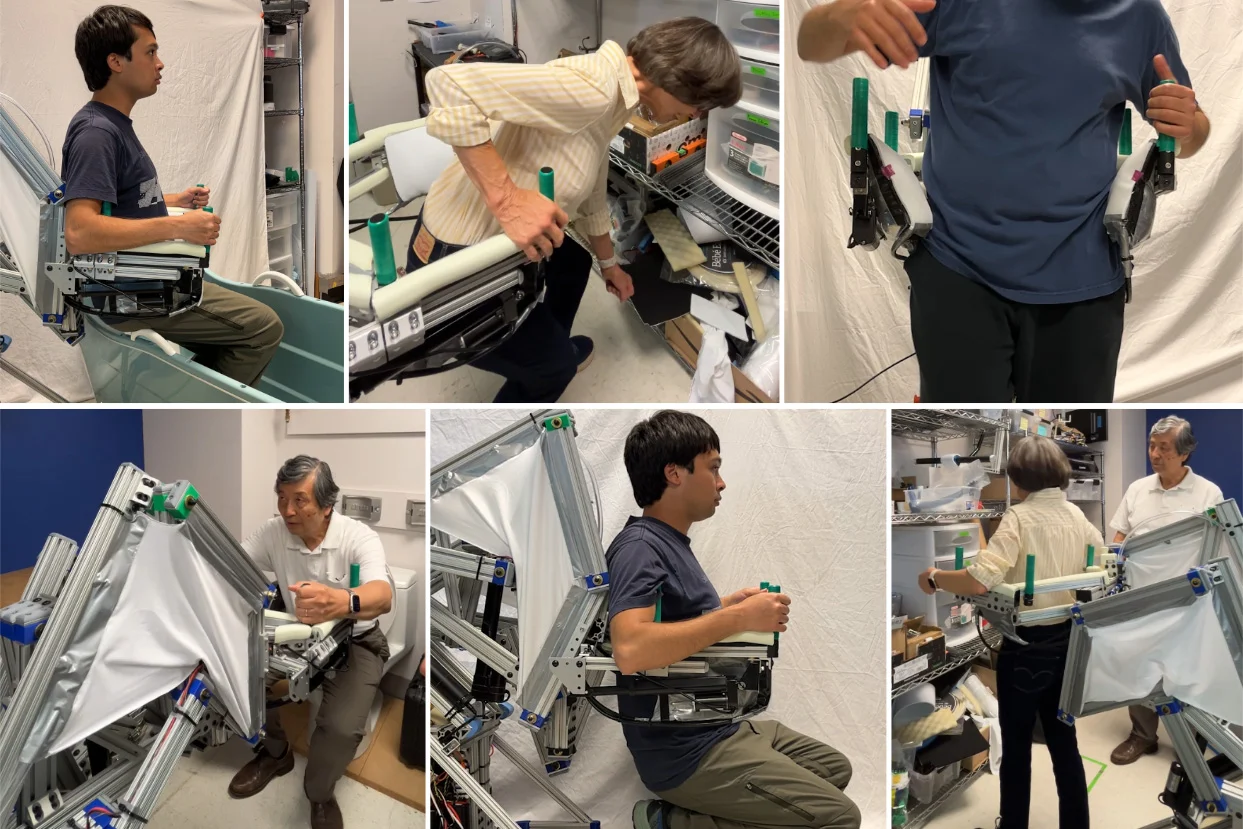How E-BAR a Handlebar-Following Robot is Changing the Future of Senior Mobility
Introduction: The Challenge of Aging with Dignity
Aging is an inevitable part of life, and for millions of seniors around the world, the physical challenges that come with age—especially mobility issues—can dramatically impact quality of life. Falls are a leading cause of injury among older adults, often resulting in hospital stays, long-term rehabilitation, or even permanent loss of independence.
But what if there were a way to offer mobility assistance that doesn’t feel patronizing? What if seniors could retain their sense of autonomy and dignity, while still benefiting from advanced fall-prevention technology?

This is where MIT’s latest breakthrough, E-BAR, steps in—literally and figuratively.
What is E-BAR?
E-BAR (Elderly-Balance Assistive Robot) is an innovative, mobile robotic system developed at the Massachusetts Institute of Technology (MIT), designed to assist seniors in walking safely and independently. Unlike conventional mobility aids like walkers or canes that require the user to lead and push, E-BAR is designed to follow the senior from behind, using a clever system of handlebars and sensors.
But this isn’t just about physical assistance. It’s about psychological empowerment.
How E-BAR Works
At first glance, E-BAR might resemble a sleek, high-tech rolling cart. But under its minimalist exterior lies a network of smart sensors, pressure-sensitive handlebars, and real-time motion analysis systems.
Here’s how it functions:
- Handlebar Support: E-BAR provides a set of handlebars from behind, which the user can hold onto for balance. The device responds to slight shifts in body weight and hand pressure to provide corrective support, helping to stabilize the user in real time.
- Follow-Behind Mobility: Unlike a walker, which the user must push forward, E-BAR follows the senior at a safe, adjustable distance. This eliminates the need for forward exertion, making it easier for users with arthritis, limited strength, or fatigue.
- AI-Driven Gait Monitoring: Equipped with sensors and machine learning algorithms, E-BAR constantly evaluates the user’s walking pattern. If it detects instability, sudden hesitations, or irregular gait, it can provide immediate physical support and even issue alerts if intervention is needed.
- Non-Intrusive Presence: E-BAR’s follow-from-behind design means seniors don’t feel like they’re being “monitored” or restricted. Instead, they experience the sensation of walking freely with gentle guidance—a profound psychological benefit that maintains their sense of self-reliance.
Why E-BAR Matters: Beyond Just Physical Assistance
1. Restoring Dignity
One of the core principles behind E-BAR’s design is to protect the dignity of aging individuals. Traditional mobility aids can often feel stigmatizing or infantilizing. E-BAR, on the other hand, provides subtle support in a way that doesn’t scream “disability” or “dependency.”
2. Reducing Fall Risks
According to the CDC, more than one in four older adults fall each year. E-BAR’s dynamic balance assistance and motion monitoring directly tackle this problem, reducing the chance of falls significantly—especially in home environments.
3. Encouraging Mobility
Many seniors reduce their walking activity due to fear of falling, which leads to further physical decline. E-BAR acts as a confidence booster. It gives seniors the peace of mind to keep moving, whether at home, in assisted living communities, or during rehabilitation.
4. Bridging Human-Robot Trust
One of the standout features of E-BAR is the trust it fosters between humans and machines. Its intuitive, responsive design means seniors quickly learn to rely on its assistance without feeling dependent on it—an important distinction that traditional mobility devices often fail to address.
Use Cases and Future Potential
E-BAR is currently being evaluated in real-world senior care settings, with overwhelmingly positive feedback. Early tests suggest it could become a valuable tool not only for individual use but also in hospitals, physical therapy clinics, and long-term care facilities.
MIT researchers are also exploring advanced capabilities, including:
- Voice interaction for calling caregivers
- Integration with smart home systems
- Remote monitoring for family or healthcare providers
- Predictive analytics for long-term mobility assessment
The Technology Behind the Magic
E-BAR represents a convergence of several cutting-edge fields:
| Technology Area | Application in E-BAR |
|---|---|
| Robotics | Smooth, autonomous motion and responsive steering |
| AI and Machine Learning | Gait pattern recognition and fall prediction |
| Human-Centered Design | Ergonomics and intuitive user interaction |
| Sensor Fusion | Real-time data from pressure, motion, and proximity sensors |
This multi-disciplinary integration is what allows E-BAR to deliver precision assistance without intrusiveness.
Challenges and Considerations
While E-BAR is a technological marvel, it’s not without its challenges:
- Affordability: The high-end components and AI integration may initially limit access to wealthier institutions or individuals.
- Customization: Seniors have diverse mobility needs. E-BAR must be adaptable to various health conditions and body types.
- Battery Life and Maintenance: Regular charging and upkeep may pose hurdles for some users.
MIT is actively working on addressing these limitations by creating affordable prototypes and exploring partnerships with healthcare providers and insurance companies.
Final Thoughts: A Step Toward Compassionate Tech
E-BAR is more than just a robot—it’s a symbol of what compassionate engineering can achieve. As we face the realities of a rapidly aging global population, innovations like E-BAR aren’t just helpful; they are essential.
By combining human empathy with robotic precision, MIT has created a system that respects, empowers, and protects our elders. It’s a bold step toward a future where aging doesn’t mean surrendering independence—but rather embracing a new kind of freedom.
If you enjoyed this article, don’t miss our previous posts packed with tech insights and reviews—check them out on our website!



